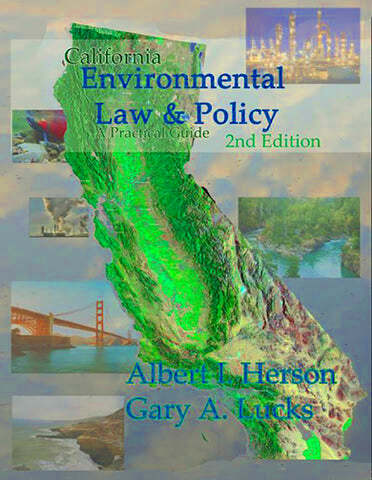Key Aspects of California Environmental Protection Laws
For so many years, California has been a trailblazer in environmental protection, setting standards that other states aspire to. Given its varied ecosystems and increasing inhabitants, the state understands that it needs to conserve natural resources as well as promote sustainable development. The existing laws are meant to handle various ecological issues ranging from air and water quality through to waste management and preservation of habitats. Therefore, these legislations are important for people living there, business operators and all those interested in protecting our environment.
Overview of Key Legislation in California

The Environmental Protection Act, California EPA, and many others have been established. These are some major ones:
- California Environmental Quality Act (CEQA): Requires state and local agencies to assess the environmental impact of their actions.
- Clean Air Act: Aims to improve air quality by regulating emissions from industries and vehicles.
- Clean Water Act: Ensures the protection of water resources by regulating pollutant discharges.
- California Global Warming Solutions Act: Sets targets for reducing greenhouse gas emissions to combat climate change.
- Hazardous Waste Control Law: Regulates the management and disposal of hazardous waste to protect public health and the environment.
Pollution, resource conservation and climate change are among the various issues that these laws provide a legal basis for as far as environmental protection is concerned in California.
Role of California Environmental Protection Agency
In enforcing the environmental laws of the state, California Environmental Protection Agency plays a crucial role. It was created to bring together all of the state’s efforts to regulate the environment; thus, CalEPA oversees different departments, which are responsible for different aspects of protection against environmental degradation. They include:
- Air Resources Board (ARB): Focuses on improving air quality and reducing greenhouse gas emissions.
- Department of Toxic Substances Control (DTSC): Manages hazardous waste and promotes clean-up efforts.
- State Water Resources Control Board: Oversees the state’s water quality and supply, ensuring safe and sustainable water resources.
CalEPA also cooperates closely with local agencies, businesses, and communities to ensure compliance with environmental laws. By means of education, monitoring, and enforcement, CalEPA protects California’s natural resources and promotes sustainable practices in different sectors.
Importance of Environmental Impact Reports
EIRs in California state play an integral role within its environmental planning procedure. They assist in analyzing the possible environmental impacts of a proposed project, which gives vital resources to policymakers. Moreover, representative plans serve various necessitous influences by demanding that contractors and organizations quantify their activities’ impending results:
- Informed Decision-Making: EIRs provide a comprehensive analysis that helps agencies make educated choices about whether to approve or modify a project.
- Public Participation: The EIR process encourages community involvement, allowing residents to voice their concerns and contribute to project discussions.
- Mitigation Measures: EIRs often propose measures to reduce negative impacts, ensuring that environmental considerations are integrated into project design.
- Transparency: By making the potential environmental impacts public, EIRs promote transparency in government and project planning.
No doubt distinguishing EIRs serves an important purpose in allowing California to achieve its goal of harmonizing its growth with sustainable development patterns.
Understanding Water Quality Regulations
You have received training on data until October of the year 2023. The significance of water standard is for inhabitants’ physiologies, biosystems, and financial masquerades, thus California has put in place exemplary policies to guarantee purity. Among the regulations concerning quality of water in this state include preventing microbial pollution prevention, proper management of this precious resource, as well as setting safety levels for drinking water. Major parts comprise:
- Safe Drinking Water Act: Establishes standards for drinking water quality and ensures that public water systems meet safety requirements.
- National Pollutant Discharge Elimination System (NPDES): Regulates discharges of pollutants into water bodies, requiring permits for industrial, municipal, and other discharges.
- Total Maximum Daily Loads (TMDLs): Identifies the maximum amount of a pollutant that a water body can receive while still meeting water quality standards.
Golden State is motivated in accordance with these laws and rules to save various water supplies that enable a conducive eco-system hence providing clean drinking water for every citizen.
Air Quality Standards and Regulations
Public health and environmental well-being highly depend on good air quality, which is a major concern. Due to its diverse geography and climate problems, California has some of the tightest air quality standards in the nation. Various efforts are made under the state’s air quality regulation to minimize pollution and enhance air health.
- California Clean Air Act: Sets standards for air quality and mandates local air districts to develop plans to achieve these standards.
- Mobile Source Regulations: Targets emissions from vehicles, including cars, trucks, and buses, through stringent emission standards and incentives for cleaner technologies.
- Stationary Source Regulations: Regulates emissions from industrial facilities, requiring permits and compliance with air quality standards.
Moreover, the California Air Resources Board (ARB) is keeping an eye on the air quality and also initiates programs so as to mitigate air pollution such as promotion of electric cars together with renewable energy sources. Therefore through these regulations California has been able to protect public health and minimize effects of air pollution on communities.
Enforcement Mechanisms for Environmental Laws
It is very important to enforce the environmental laws so as to ensure that they are followed and to protect the California’s natural resources. There are several ways of upholding these laws, which involve different agencies as well as techniques. This is how enforcement operates:
- Inspections and Monitoring: Regulatory agencies regularly inspect facilities, construction sites, and other activities to ensure adherence to environmental laws. This includes checking emissions, waste management practices, and compliance with permits.
- Permitting Systems: Many environmental laws require permits for activities that may impact the environment. Agencies review applications, set conditions, and monitor compliance with these permits.
- Civil Penalties and Fines: When violations occur, agencies can impose fines or other penalties. This serves as a deterrent and encourages entities to follow regulations.
- Legal Action: In severe cases, the state or local authorities can take legal action against violators. This may involve lawsuits to enforce compliance or seek restitution for environmental damage.
- Collaboration with Local Governments: Many local agencies partner with state regulators to enforce environmental laws at the community level, ensuring compliance where it matters most.
As such California using this methods of implementation seeks to maintain a high bar when it comes to environmental protection and guarantee everyone participates in keeping the environment safe.
FAQ about California Environmental Protection Laws
You are not the only person who has questions about California’s laws on environmental protection! For instance, some of the most common questions are:
- What is the purpose of the California Environmental Quality Act (CEQA)?
CEQA aims to inform decision-makers and the public about the potential environmental impacts of proposed projects. - How can the public participate in the EIR process?
The public can review draft EIRs, attend public meetings, and submit comments to express their concerns and suggestions. - What are the consequences of violating environmental laws?
Violations can result in fines, legal action, and potential damage to a company’s reputation. - How does California address climate change?
California has implemented various laws aimed at reducing greenhouse gas emissions, including the California Global Warming Solutions Act. - Who regulates air and water quality?
The California Air Resources Board (ARB) regulates air quality, while the State Water Resources Control Board oversees water quality regulations.
Through these frequently asked questions, we can have a look at the environmental regulations established by California together with the reasons why they matter helping its people and organizations to be aware of what they need to do.
Conclusion on the Importance of Compliance
To sum up, following the environment laws of California is not simply a legal requirement instead it is a commitment for the preservation of our world for the younger generations. Protecting the air we inhale, the water we consume and the wide range of ecosystems that make our life pleasant are the main aims of these laws. When people and organizations stick to these rules they help to create an easy atmosphere as well as long-lasting tomorrow.
Furthermore, it is well-known that compliance builds community trust and improves the overall quality of life for all Californians. The rising environmental challenges we encounter point to the need for a deep understanding of these laws as well as their adherence. This way, California will stay a beautiful and prosperous place to live for many years to come.


